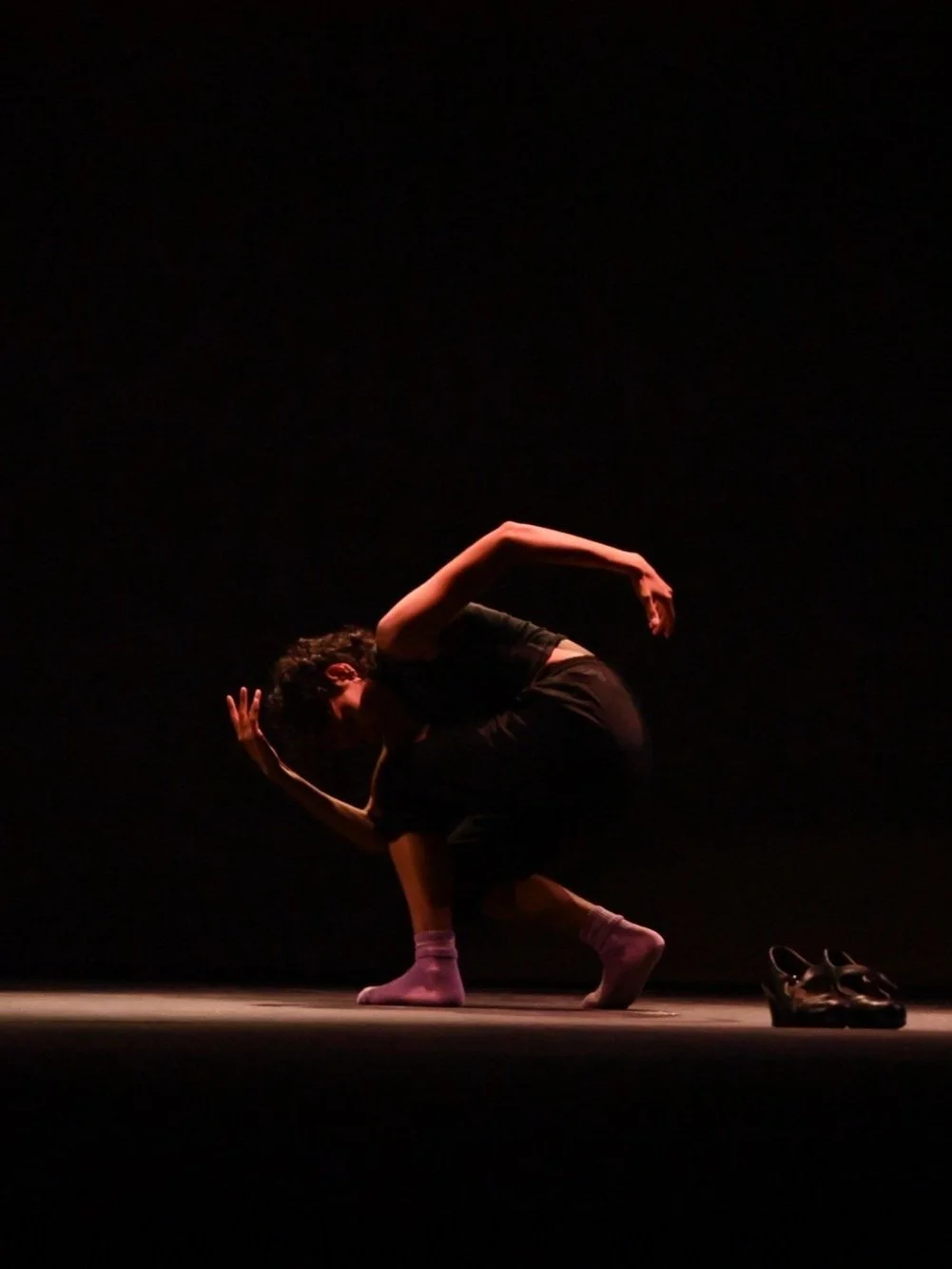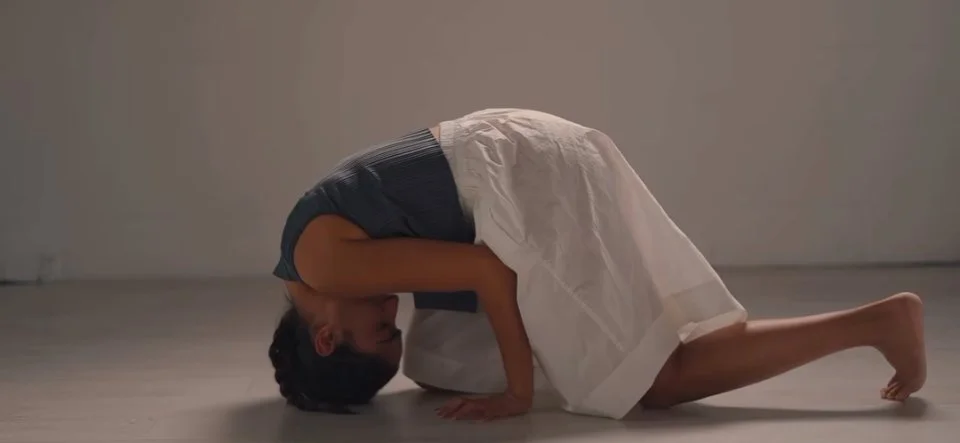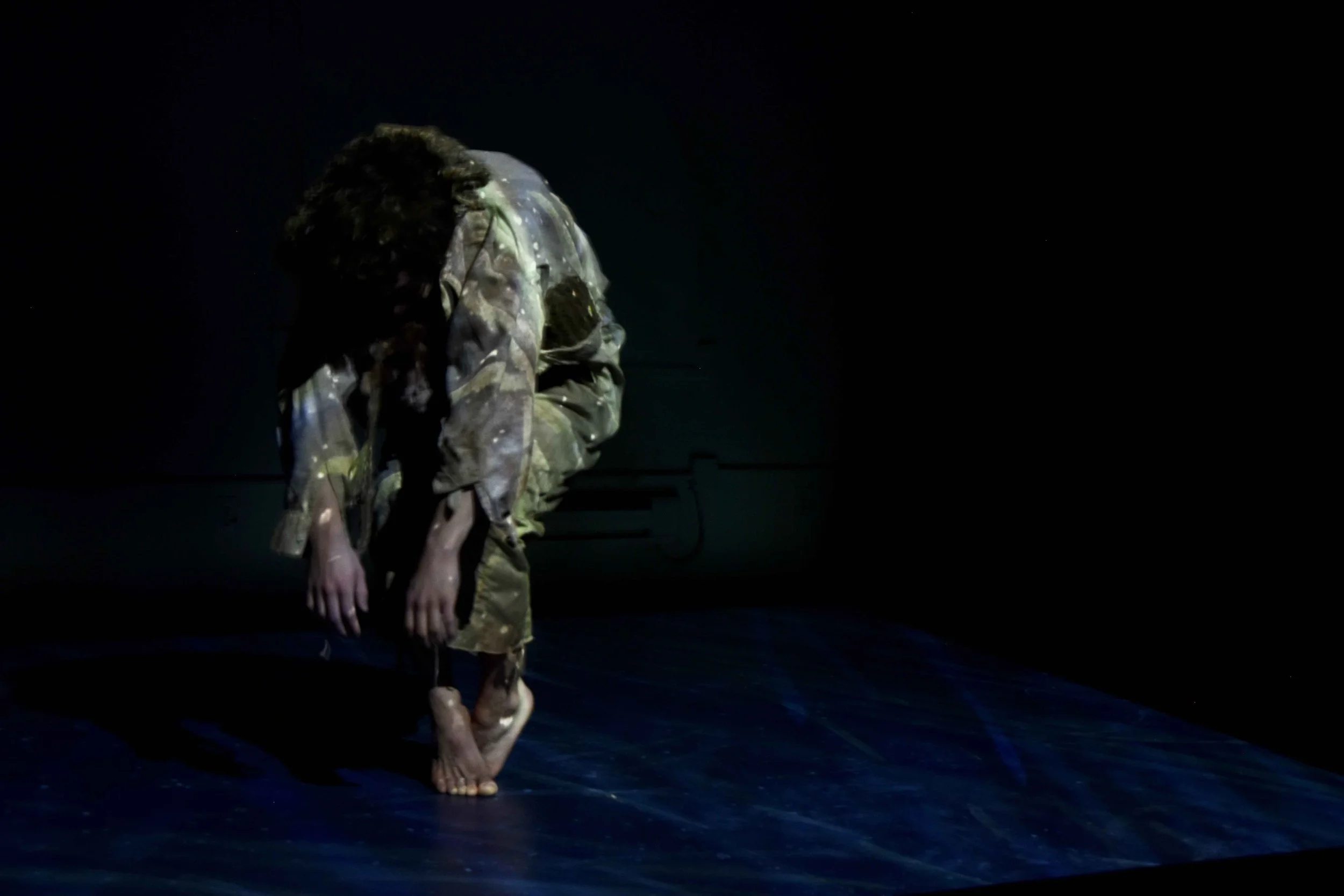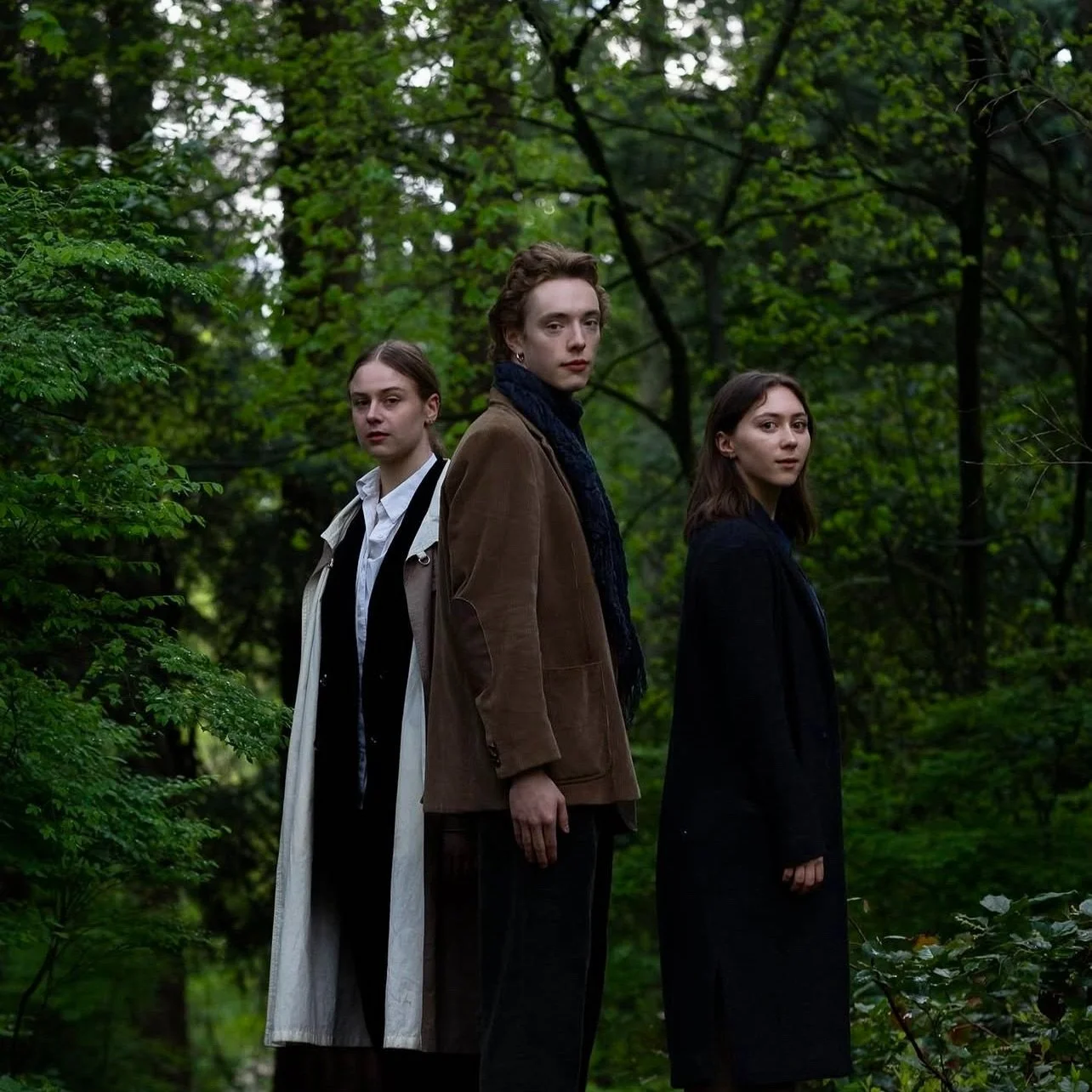Dance reviews: Explorations of identity take striking, and sometimes radical, form on local stages
At the Scotiabank Dance Centre, Daina Ashbee’s We learned a lot at our own funeral takes an unblinking, unsettling look at the death of the self; surreal studies make big impacts at Small Stage
Imara Bosco in We learned a lot at our own funeral. Photo by Patrice Mathieu
AJ Simmons upends flamenco at Dances for a Small Stage
We learned a lot at our own funeral continues at the Scotiabank Dance Centre to February 8; Dances for a Small Stage was at Please! Beverage Co. on February 5
DANCE THIS WEEK IN Vancouver has taken us into surreal new realms, in some cases beyond traditional notions of time and space, or life and death.
Living up to her reputation as one of the country’s most fearless, radical choreographers, Daina Ashbee showed her latest work at the Scotiabank Dance Centre, and it felt more like some dark primal rite than an evening out at the theatre.
With the audience seated and exposed on all four sides of the Faris Studio stage, there was no escaping the unsettling territory that the solo We learned a lot at our own funeral explored.
It’s an understatement to say the opening is provocative: Italian dancer Imara Bosco, stripped nude, slowly stalks the room, raising her voice in a long, meditative hum and inviting individual visitors to do the same, occasionally stooping to douse herself ritualistically in sunflower oil.
From here, haunting droning voices layer across the soundtrack. To give away much more would take away from the piece’s power. Suffice it to say there are sections in complete darkness, where all we hear are the dancer’s feet, her breath, and mats moving. As the lights ever-so-slowly rise like the half-dark of pre-dawn, a body lies prostrate on a reflective white surface, suspended in ghostlike limbo—emitting unearthly howls, her abdomen heaving with every breath. At other times, Bosco bends unnaturally, trying to push herself off the ground; sometimes she slams her body again and again against the floor, hair flailing—fighting for new life, perhaps exorcising the old self. Powerful images include Bosco slithering and contorting through a perimeter of sand, leaving marks behind her.
Ashbee has said the piece was inspired by the death of her former self, after difficult, transformative life events. So you could read the work as death and rebirth of the self, or as its own exploration of realms beyond life. However you interpret it, Ashbee, as ever, is probing brutally honest interior places that most of us would choose not to go to, and she’s breaking any expectations for “beauty” in dance. Hair matted with sweat, Bosco gives everything and more to the piece’s extreme demands, ultimately exposing every vulnerability, emerging naked, and unleashing a defiant, ungodly howl from the lower reaches of her soul. Chilling, disorienting, unblinking, and cathartic, We learned a lot at our own funeral gets deep under your skin—and possibly leaves you shellshocked.
Nasiv Kaur Sall in Tea. Photo from video still by Meaghan Gipps
ACROSS TOWN, several works at this week’s Dances for a Small Stage probed female identity in a similar, though far less provocative, way. There were 11 short pieces, served up as part of the PuSh Festival at Please! Beverage Co. where craft cocktails flowed and many audience members kept their toques on, with the stage located in a tent that attached to the distillery-bar. Offerings on the strong all-female program ran the gamut from Nicole Rose Bond’s taut and gracefully enigmatic work by legend Peggy Baker to AJ Simmons’s outstanding deconstruction of gender in flamenco.
Highlights amid the more surreal studies included Jessica Dawn Keeling’s piece, set to an old Scottish “waulking” song—the traditional, rhythmic tunes that women would sing to beat and soften tweed fabric. The dance-theatre artist reframes the music with fever-dream touches, seeming to float horizontally off a chair, the textile forming a cloud around her body. Look for this exciting artist to develop it into a longer work.
Nasiv Kaur Sall’s Tea, meanwhile, developed another striking, dreamlike dance-theatre meld, her character miming the words to a prim British woman offering tea, and then the piece morphed movement- and sound-wise as it embraced her South Asian roots instead. It was a compelling exploration of the colonial and postcolonial body, the West melting into the East, or, on a wider scale, of the façades we put on and the journey we take to express our real selves. ![]()



































